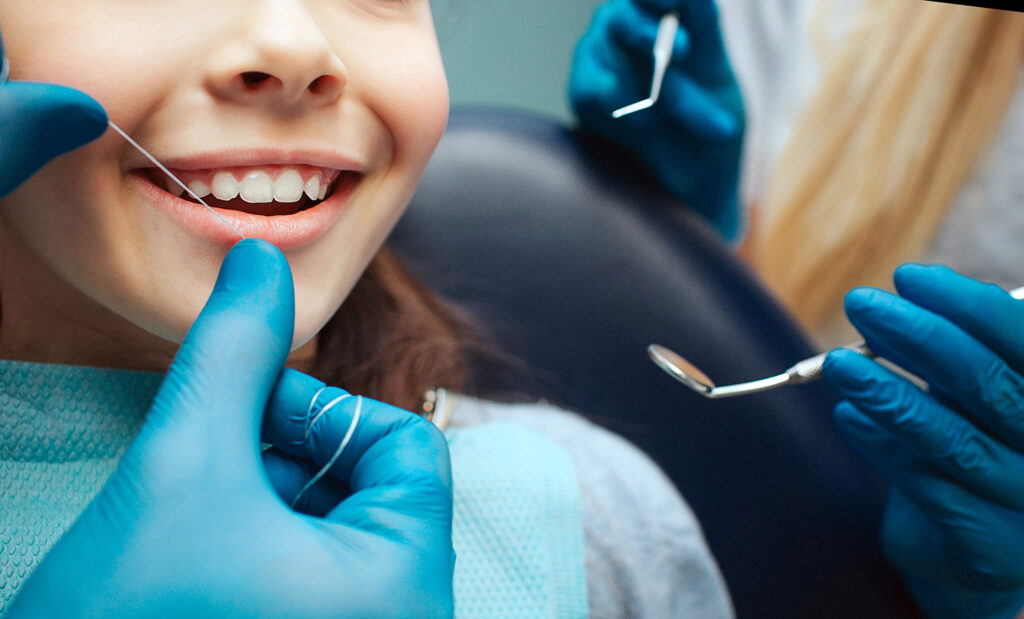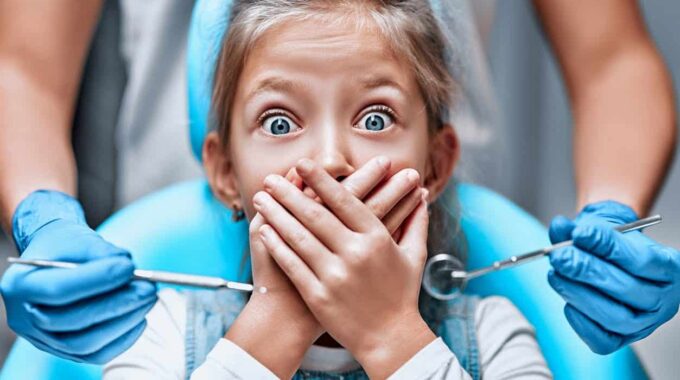Going to the dentist can feel very scary for many children, and sometimes even parents…

What Goes into Teeth Cleaning? The Secret’s Out
A routine dental cleaning, also known as a prophylaxis, is a fundamental component of oral health maintenance. Beyond the daily routine of brushing and flossing, professional dental cleanings play a crucial role in preventing gum disease, cavities, and maintaining an overall healthy smile. In this article, we’ll uncover the steps involved in a regular dental cleaning to give you insight into the process and emphasize its importance in oral care.
1. Welcome and Initial Assessment:
The dental cleaning journey begins with a warm welcome from the dental hygienist or dentist. During the initial assessment, the oral health professional reviews the patient’s medical history, discusses any concerns or issues, and takes note of changes since the last visit. This step establishes a foundation for personalized care.
2. Examination and X-rays:
To comprehensively assess oral health, a thorough examination is conducted. Dental professionals inspect the teeth, gums, tongue, and surrounding oral structures. X-rays may be taken to reveal hidden issues such as cavities between teeth or problems beneath the gumline.
3. Plaque and Tartar Removal:
Plaque, a sticky film of bacteria, continually forms on teeth. When not adequately removed, it hardens into tartar (calculus). The dental hygienist employs specialized instruments to gently scrape away both plaque and tartar. This process, known as scaling, targets the accumulation of bacteria and helps prevent the development of cavities and gum disease.
4. Polishing:
After scaling, the dental professional uses a high-powered electric toothbrush and gritty toothpaste to polish the teeth. This step removes surface stains and leaves the teeth with a smooth, shiny finish. While the primary purpose is aesthetic, a polished surface also makes it more difficult for plaque to accumulate.

5. Flossing and Interdental Cleaning:
Flossing is an integral part of dental cleaning, reaching areas between teeth that toothbrushes can’t access. The dental hygienist demonstrates proper flossing techniques and may use other interdental cleaning tools like small brushes or picks to ensure a thorough removal of plaque and debris.
6. Fluoride Treatment:
A fluoride treatment is often recommended as part of a dental cleaning, particularly for patients at higher risk of cavities. Fluoride helps strengthen tooth enamel, making it more resistant to acid attacks from bacteria. It is typically applied as a gel, foam, or varnish and left on the teeth for a brief period.
7. Patient Education:
Dental professionals take the time to educate patients about proper oral hygiene practices, including effective brushing and flossing techniques. They may discuss dietary choices that impact oral health and offer personalized recommendations based on the patient’s unique needs.
8. Periodontal Evaluation:
In some cases, a periodontal evaluation is performed to assess the health of the gums. This involves measuring the depth of spaces between the teeth and gums (pocket depth). Deeper pockets can be an indication of gum disease, and appropriate recommendations for treatment or maintenance are provided.
9. Follow-Up and Treatment Planning:
After the cleaning is complete, the dental professional discusses the findings and collaborates with the patient on a treatment plan if necessary. This may involve scheduling follow-up appointments for additional treatments or addressing specific dental concerns.
10. Appointments for Future Cleanings:
Regular dental cleanings are typically recommended every six months. As the appointment concludes, the patient schedules the next visit to ensure consistent preventive care and maintenance of oral health.
Regular dental cleaning involves a systematic and comprehensive approach to maintaining oral health. Beyond the aesthetic benefits of a bright and polished smile, these cleanings play a pivotal role in preventing oral health issues and addressing concerns early on. By understanding the steps involved, patients can actively participate in their oral care, contributing to a lifetime of optimal dental health and a radiant smile.
January is a time for new resolutions; is better dental health one of yours? Reach out to us today to schedule a cleaning!



